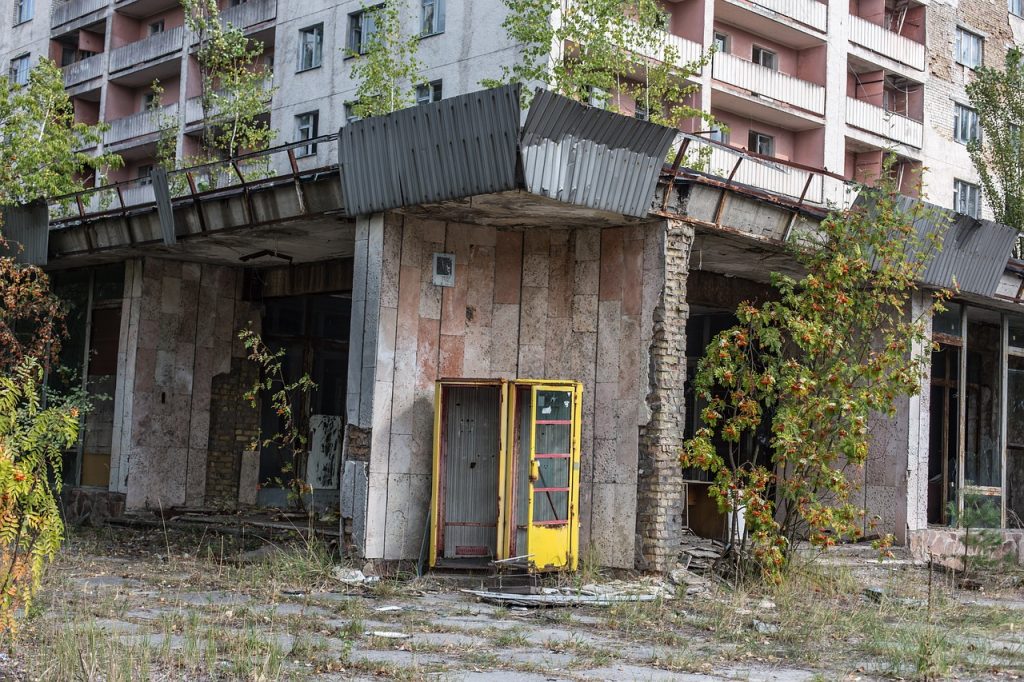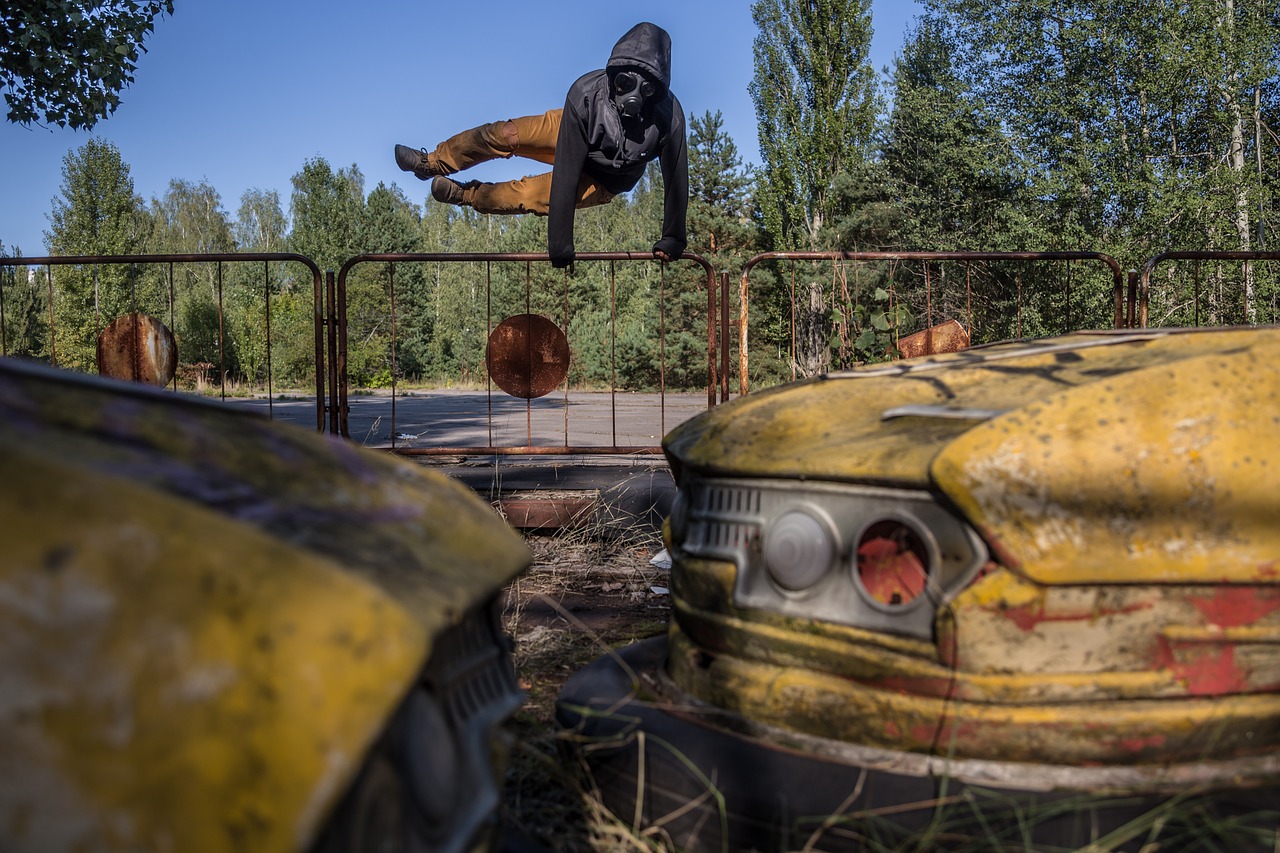Pripyat is the poster child for abandoned places all over the globe. The city was established in 1970 and had nearly 50,000 inhabitants when it was completely evacuated after the 1986 Chernobyl catastrophe.
Pripyat remains an uninhabited city even though its former inhabitants left behind buildings, furniture, and other signs of life. You can still find books in classrooms and decaying dolls in cribs.
Photographs are still in their original frames. The Ferris wheel at Pripyat amusement parks is perhaps the most iconic landmark. It’s a stark reminder of what was. After the broadcast of HBO’s Chernobyl series on HBO, the government of Ukraine has declared that the site would be an official tourist attraction. It’s nothing like a haunted house in Ohio or anything similar to that.
Ghost City of Pripyat
Pripyat’s and Slavutych’s story is one of two stories: Pripyat was a former Soviet model metropolis, built to house Chernobyl workers, but abandoned to radioactive pollution and nature’s ravages; Slavutych was an urban phoenix, rising from the ashes to replace it.
After ill-judged testing of Reactor Number 4 at Chernobyl’s Nuclear Power Plant went disastrously wrong, it took 36 hours for Soviet authorities to order an evacuation of Pripyat (just two miles away from the plant).
More than 49,000 people fled their homes in less than four hours.
The plant was evacuated by 1,200 buses.
They were informed they would be away for 2 or 3 days. They were advised to bring a minimum of identity papers, documents, food, and clothing.
Pripyat was declared too radioactively hazardous for human habitation for at most 24,000 years.

People of Pripyat
Zabirchenko, as one of the Chernobyl workers, was an official ” Hero of the Soviet Union.” He waved his hand to evade the honor.
These men were heroes. Every one of them. They prevented a more significant disaster. They saved Ukraine, Russia, or the Soviet Union as they were, but all of Europe.
Next month, thousands of people from Slavutych in northern Ukraine will come together to light candles at the memorial for the 30 victims of the worst nuclear disaster.
Three decades later, they will recall the dead and the memories and dreams they left behind in Pripyat (the ghost city that was once home to them).
Aftermath
Six months later, Soviet authorities declared that a new town would be built to replace the area 30 miles northeast of the power plant. Many of the families that fled Pripyat retreated to Slavutych (the old Slavic name for the Dnieper River), where they settled.
The original area where it was built was covered in fresh, uncontaminated soil for two meters. Architects and construction workers represented eight former Soviet republics.
They included Armenia, Azerbaijan (Estonia), Georgia, Latvia, Lithuania, Russia, and Ukraine. Each was responsible for creating one of eight districts. Because each district is different, each has its own cultural and ethnic features. So, houses and flats in the Georgian area have more decoration than those in the less austere Russian districts.
Today, fewer former Pripyat residents live in Slavutych than ever before, but thousands of them remain employed at Chernobyl, despite being closed under European Union pressures in 2000.

Real-Time Emotions
Every morning, the train from Slavutych takes workers such as Pasha Kondratiev, 62 years old, 50 minutes to their only destination: Chernobyl. They are regorged in Slavutych each evening around 4.30 pm. All train passengers are subject to radiation screenings every day.
Kondratiev is a radiation-measuring equipment inspector at Chernobyl. Kondratiev began his career at the plant 33 years ago. He and his wife Natasha, along with their daughters Tatiana (12 years) and Marina (10 years), walked to the bridge above the river that feeds the cooling pond of the nuclear plant to have a better view.
Due to the radiation levels, the area was later referred to as “the bridge that died.”
“I could see ruins of the nuclear reactor. It was completely demolished, and there was smoke from the reactor. Although we didn’t have any further information, it is evident that this was serious. Kondratiev states that they knew it was scary.
Natasha grabbed the girls the day after the evacuation announcement and crossed the city to catch the train to Smolensk in Russia.
Kondratiev added that they were now in their Slavutych bungalow home: “When we saw the power station, I instantly realized there was no possibility we were going back …”.”
His wife shakes her head: “I was certain that we were going back at the beginning.” As we were riding on the train, several women whose husbands had been firefighters began to talk about their experiences with firefighting and were crying.
I felt so worried for Pasha. My heartbeat increased rapidly. “In those days, we didn’t even have mobile phones. I didn’t know what would happen to him.”
One concern is whether Pripyat is safe to visit. The Zone of Alienation can be visited relatively safely. Many Ukrainian companies offer guided tours of this area.
Most places in the city have a radiation dose below one mSv, or one microsievert an hour.





